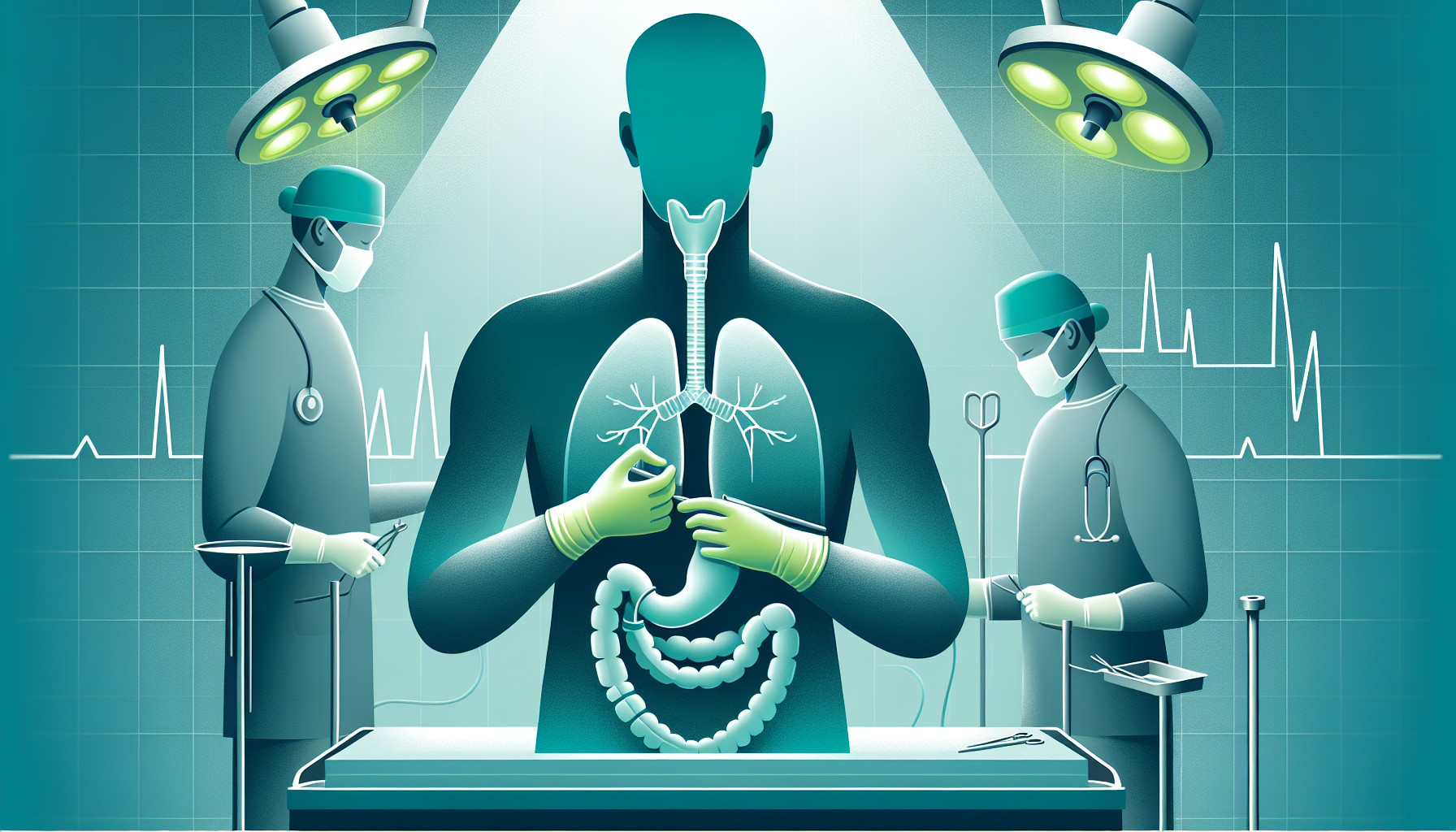Our Summary
This study looked at a complication that can occur after a type of surgery to remove part of the esophagus (the tube that connects your throat to your stomach), often used to treat esophageal cancer. The complication is called a paraconduit hernia, which is when part of the stomach or intestines pushes through a weak spot in the abdominal wall, causing pain and potentially serious health problems.
The researchers studied patients who had this surgery between 2008 and 2018, and found that about 8.2% of them developed a paraconduit hernia. Most of these hernias were fixed with another minimally invasive surgery, and this approach was generally successful and safe.
Interestingly, they found that patients who had received radiation therapy before their surgery were more likely to develop a hernia, while those with a higher body mass index (BMI) were less likely. They didn’t find any link between developing a hernia and loss of muscle mass.
In conclusion, paraconduit hernia is a relatively common complication after this type of surgery for esophageal cancer. Having radiation therapy before surgery increases the risk of this complication. However, if a hernia does develop, it can usually be repaired safely and effectively with minimally invasive surgery.
FAQs
- What is a paraconduit hernia and when does it occur?
- What factors increase the likelihood of developing a paraconduit hernia after esophagectomy?
- How are paraconduit hernias treated after esophagectomy?
Doctor’s Tip
A helpful tip a doctor might give to a patient undergoing esophagectomy is to discuss with their healthcare team about the potential risk of developing a paraconduit hernia, especially if they had radiation therapy before surgery. It’s important to be aware of the signs and symptoms of a hernia, such as abdominal pain or discomfort, and to seek medical attention if they experience any concerning symptoms. Additionally, maintaining a healthy body weight may help reduce the risk of developing a hernia. Regular follow-up appointments with their healthcare team can help monitor for any potential complications and address them promptly if needed.
Suitable For
Patients who are typically recommended for esophagectomy include those with esophageal cancer that has not spread beyond the esophagus, Barrett’s esophagus with high-grade dysplasia (abnormal cells that could potentially become cancerous), or other conditions such as severe gastroesophageal reflux disease (GERD) or esophageal strictures that have not responded to other treatments. Additionally, patients who are in good overall health and able to tolerate major surgery may be candidates for esophagectomy. It is important for patients to discuss the risks and benefits of esophagectomy with their healthcare provider to determine if it is the best treatment option for their specific condition.
Timeline
Before esophagectomy:
- Patient is diagnosed with esophageal cancer and undergoes various tests to determine the stage and extent of the cancer.
- Treatment options are discussed with the patient, including the possibility of esophagectomy.
- Patient undergoes pre-operative preparations, which may include chemotherapy and/or radiation therapy to shrink the tumor and improve surgical outcomes.
- Patient undergoes esophagectomy surgery to remove part of the esophagus and potentially nearby lymph nodes.
After esophagectomy:
- Patient typically spends several days in the hospital recovering from surgery.
- Patient may experience side effects such as difficulty swallowing, reflux, and changes in diet.
- Patient undergoes follow-up appointments and monitoring to ensure proper healing and recovery.
- Some patients may develop complications such as paraconduit hernia, which may require additional surgery to repair.
- Overall, patients are monitored closely for any signs of recurrence or other complications related to their esophageal cancer.
What to Ask Your Doctor
- What are the potential complications of esophagectomy surgery, and how common are they?
- How can I reduce my risk of developing a paraconduit hernia after surgery?
- Are there any specific lifestyle changes or precautions I should take after surgery to prevent hernia development?
- What symptoms should I watch out for that may indicate a paraconduit hernia, and when should I seek medical attention?
- How is a paraconduit hernia typically diagnosed and treated?
- Are there any factors, such as radiation therapy or BMI, that may increase my risk of developing a hernia after surgery?
- What is the typical recovery process like for patients who develop a paraconduit hernia after esophagectomy surgery?
- Are there any long-term effects or risks associated with having a paraconduit hernia, even after it has been repaired?
- How often should I follow up with my healthcare provider after surgery to monitor for potential complications like hernia development?
- Are there any additional steps I can take to promote overall healing and reduce my risk of complications following esophagectomy surgery?
Reference
Authors: Hietaniemi H, Järvinen T, Ilonen I, Räsänen J. Journal: Scand J Gastroenterol. 2023 Jul;58(7):764-770. doi: 10.1080/00365521.2023.2174815. Epub 2023 Feb 7. PMID: 36750931
